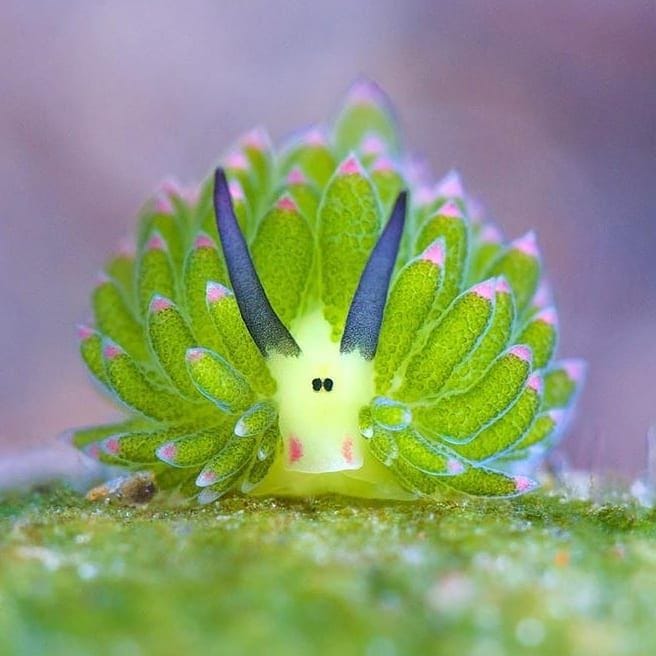The Carbon XPRIZE Update, Lowercarbon Capital’s $350m Carbon Removal Fund, and Aliga Microalgae.
In today’s report: News: Could algae tech win the Carbon XPRIZE competition?
Chart: How have alternative protein fermentation companies fared?
Epic: Scientists develop the hydrogen from microalgae space.
Fireside chat: David Erlandsson from Aliga Microalgae.
Around the web: Lowercarbon Capital launches a $350m carbon removal fund.
“If you can find one or two people who can inspire and mentor you along the way, that can make all the difference.” — Dr Nigel Bradly, EnviroStrat
Dear algae technologists,
Hello and welcome to The Paxtier Report for Wednesday, April 20th 2022!
In case you missed it, here’s Costasiella Kuroshimae, a nudibranch doing the rounds on social media thanks to its green sheep resemblance.
When these little guys eat algae, they suck out the chloroplasts and incorporate them into their own bodies in a process called kleptoplasty. It is one of the only creatures in the world that can use algae to photosynthesise.
Markets and Investing
This week, entrepreneurs and investors alike were enthused by a handful of new funds arriving on the climate tech scene.
Notable highlights over the last 7 days included Lowercarbon Capital launching a $350m carbon removal fund, Impact Science Ventures announcing their plans to invest in climate-saving scientific breakthroughs, and Emerald Technology Ventures creating a fund to support sustainable packaging solutions.
Elsewhere on the algae tech front, Springtide Seaweed were pleased to receive $649,651 to develop new innovative nori and dulse red seaweed cultivation systems, and Vala announced their investment in FlexSea’s alternative plastic play.
It’s been fun to monitor FlexSea’s progress since we spoke to them last year. Evidently, the seaweed bioplastic space has been gaining momentum over the last few years and we’re excited to see the great work continue.
Here’s a throwback to that chat:
Why did you create FlexSea?
After single-use plastics started to accumulate in our home, it became clear that there was a problem in this space. As a result, we started looking into sustainable packaging alternatives, and concluded that seaweed should be used to create the next generation of bioplastics.
What advice would you give to someone else building things in this space?
Firstly, you don’t need a technical background to make progress in deep tech. If you have a passion for something, keep at it, because you can still get some seriously great work done.
Secondly, talk to people and get advisers. We’re lucky to have an adviser with 30 years of startup experience. He’s always pushing us to get better.
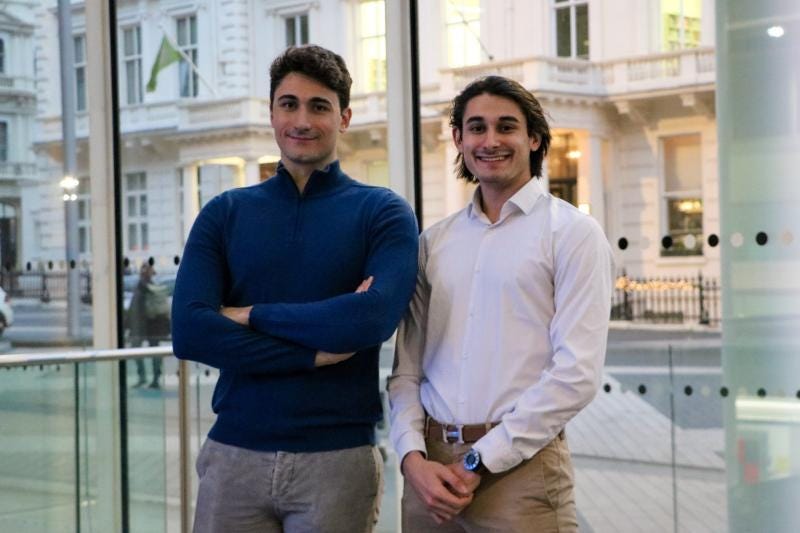
Well done guys!
Algae Carbon XPRIZE
Now, let me draw your attention to the $100 million Carbon XPRIZE competition, which also made headlines in climate tech this week. This four-year global competition invites innovators and teams from anywhere on the planet to create and demonstrate solutions that can pull carbon dioxide directly from the atmosphere or oceans, and sequester it durably and sustainably. To win the grand prize, teams must demonstrate a working solution at a scale of at least 1000 tonnes removed per year; model their costs at a scale of 1 million tonnes per year; and show a pathway to achieving a scale of gigatonnes per year in future.
From the remaining 60 competition finalists, a handful of algae teams remain including:
- KELPFARMCAREER- using a novel mooring technology to create large-scale deep-water seaweed aquaculture beds.
- MARINE PERMACULTURE SEAFORESTATION – accessing deep-water nutrients to enhance the growth of macroalgae for fixing carbon.
- TROFX – developed and demonstrated an advanced farm design that employs multiple innovations to increase yield and reduce cost of offshore farming.
- WHALE X – OCEAN NOURISHMENT DEEP SEA CARBON EXPORT – adding nutrients to the oceans to stimulate phytoplankton growth and carbon sequestration.
- GLOBAL ALGAE INNOVATIONS – The project includes buying land in South America currently used for protein production, allowing the rainforest to regrow on most of the land, and growing algae on a small portion such that the total protein production is the same as could be produced from all of the land with conventional crops.
…It’s all getting very exciting.
Algae Fermentation
To cap it all off, this week the Good Food Institute shared more insights from their alternative protein reports which group macroalgae-based protein products into the plant-based protein pillar, and microalgae-based protein products into the fermented protein class.
Overall, it was particularly interesting to note how much money flowed into fermentation-enabled meat, egg, or dairy products companies over the last few years:
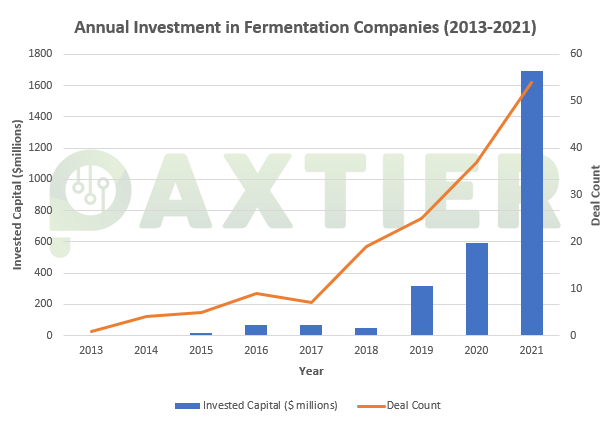
That’s the kind of graph we’ve been seeing a lot in the alternative protein space, and we know microalgae fermentation has played a part in developing this sector…
… but why have algae teams turned to the space for their produce, and what can we learn from their experiences?
This week, we jumped on a call with Aliga Microalgae to learn more.
In depth with Peter Green
💬Fireside chat: David Erlandsson, Aliga Microalgae
David Erlandsson is the co-founder and sales director of Aliga Microalgae, a company which develops, produces and supplies protein-rich chlorella products used by food, feed, beverage and dietary supplement manufacturers.
In this edited conversation, David spoke about Aliga Microalgae’s evolution, the future of algae tech, and top tips for entrepreneurs working in this space. Here’s a teaser from our call:

How has Aliga Microalgae evolved to where it is now?
In 2018, after multiple years working with low-yield, phototropically grown microalgae for fish feed, my cofounders and I changed tack.
Given the growing interest in the algae for food ingredients market, we decided to drop photosynthesis, and turned to heterotrophic fermentation of chlorella for food products. We felt this was a larger opportunity and knew we could get much higher microalgae yields.
Since that day, we’ve made a lot of progress and even managed to remove chlorophyll from our microalgae last year using random mutagenesis. The goal here was to expand our product lines, and we now offer a white microalgal product for our customers.
What advice would you give to others in this space?
It’s important to remember that algae are living organisms. As a result, you must be patient. These things rarely behave the way you want and the journey is always much longer than you expected.
Furthermore, algae companies can be expensive to setup. Be wary of that and spend time connecting with others in the space who can potentially help with financing in the future.
📝Research paper review: Enhanced chloroplast-mitochondria crosstalk promotes ambient algal-H2 production
Green hydrogen is typically created by harnessing wind or solar energy to power the electrolysis of water.
While this hydrogen production methodology is considered more sustainable than alternatives, it still has some drawbacks. Namely, electrolysis machines are notoriously expensive, and clean electricity from solar and wind is oftentimes in limited supply.
As a result, scientists are looking for ways to fix this situation, and it just so happens that Elman et al. think microalgae could hold the key.
In their awesome recent paper , the team identify a mutant microalgal strain which produces green hydrogen via photosynthesis on a “scale suited to industrial requirements”.
It works by means of an enhanced chloroplast-mitochondria crosstalk which promotes ambient algal-H2 production, and the team consider it a breakthrough.
Here’s what they had to say:
“The new mutant overcomes two major barriers that have so far prevented continuous production of hydrogen,”
“The first barrier is the accumulation of oxygen in the process of photosynthesis. As a rule, oxygen poisons the enzyme that produces hydrogen in algae, but in the mutation, increased respiration eliminates the oxygen and allows favourable conditions for continuous hydrogen production. The second barrier is the loss of energy to competing processes, including carbon dioxide fixation into sugar. It, too, has been solved in the mutant and most of the energy is being channelled for continuous hydrogen production.”
🔥 What else was hot in algae tech this week?
- SPORA develop kelp restoration project using “green gravel” in Baja California, Mexico. The team is among five national finalists in the 2022 Blackstone LaunchPad Pitch Competition. To make green gravel, they settle microscopic kelp spores onto small rocks or gravel to get juvenile kelp plants growing in the lab attached securely to the rocks. The gravel can then be scattered from a boat over a rocky reef, and the juvenile kelp plants can eventually grow beyond the gravel and become attached to the natural reef.
- (Paper) The role of epiphytes in seagrass productivity under ocean acidification – Nature.com
- This week, we heard more news concerning the proposed offshore seaweed project between Port of Duqm and DEME Concessions in Oman. According to the Omar seaweed website, these guys are hoping to tap into the multibillion dollar mariculture industry by developing a “ large-scale offshore seaweed farm that involves local stakeholders in the entire value chain.” The timing of this announcement sure caught our attention following the sad loss of the globally unique Omani kelp forests we spoke about in this report.
- USAID backs $6.3 million Madagascan sea cucumber and seaweed project.
- Zero Carbon Capital announced the first close of their Europe focussed decarbonisation fund, and the team over at Green Rock Energy Partners launched a new sustainable PE investment firm hoping to tackle waste-to-value energy assets.
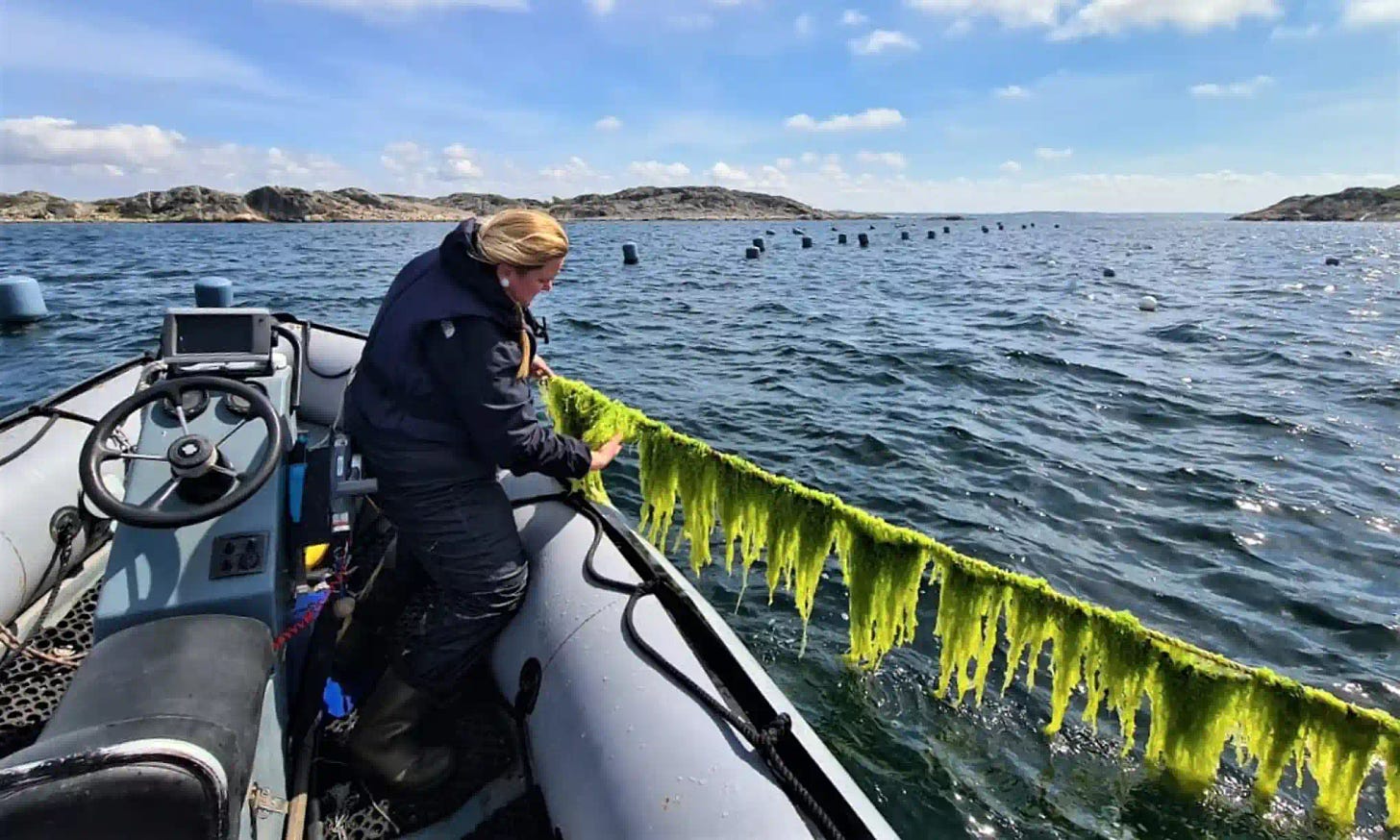
6. Some great photos in this article by The Guardian titled “Sea-farmed supercrop: how seaweed could transform the way we live.” Check it out HERE.
7. (Paper) Unlocking complex workings of the biological clock – Research team reveals what drives the circadian rhythms in cyanobacteria – National Institutes of Natural Sciences.
8. (Paper) Antiphased dust deposition and productivity in the Antarctic Zone over 1.5 million years (Nature.com).
9. DOE Invests $14 Million to Scale Up Direct Air Capture and Storage Technology, Coupled to Low-Carbon Energy Resources
10. This Sleek New Solar-Powered Ship Is a Game Changer in Fighting Climate Change: A fascinating feature of the ship is that there’s a miniature farm that can cultivate edible algae and mushrooms.
11. MOL Chemical Tankers sets out to fuel all its ships with biodiesel from Trafigura. MOL has been experimenting with many biofuels of late including microalgae.
12. An interesting piece about Blueview discusses their new algae shoes, and why it took them so long to get here. (Read more HERE).
13. ProVeg International incubator targets microalgae-based alternative proteins.
Tweets of the week
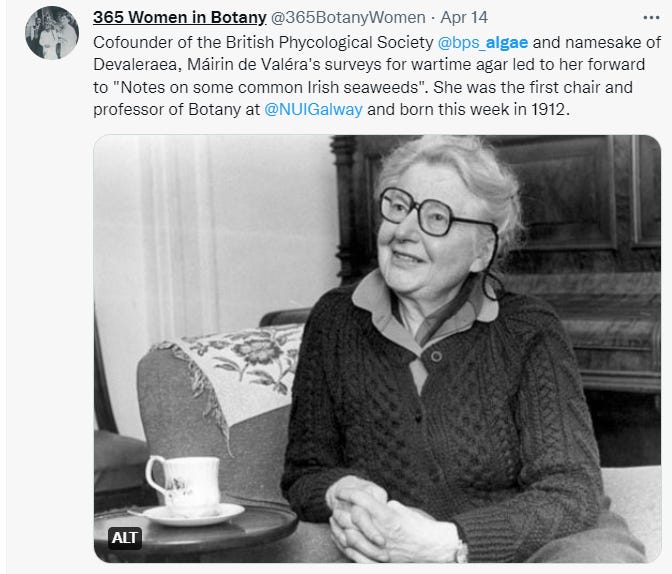
Nature Photographer of the Year 2022. One of the runner-up photos in the Mammals category is called Seaweed Toy:

14. GreenWave’s pilot seaweed subsidies programme gets a review from the The Fish Site.
15. (Paper) Adaptive responses of marine diatoms to zinc scarcity and ecological implications – Nature.com
Jobs
- Remote, part-time sales job at Connemara Seaweed Company, Ireland.
- PhD position in the development of tuneable green solvents for functional food ingredients through multiproduct seaweed biorefineries. Wageningen University, Netherlands.
Last Week’s Quiz Answer
Part I: Provisioning, regulating, cultural and supporting services.
Part II: Habitat creation and maintenance; Regulation of climate; Regulation of ocean acidification; Regulation of coastal water quality; Regulation of hazards and extreme events; Energy; Food and feed; Materials, companionship and labour; Medicinal, biochemical and genetic resources; Learning and inspiration; Physical and psychological experiences; Supporting identities
That’s all folks!
Thanks again for joining us this week. Hope you have a great day and stay tuned for more algae tech updates soon!
Peter

